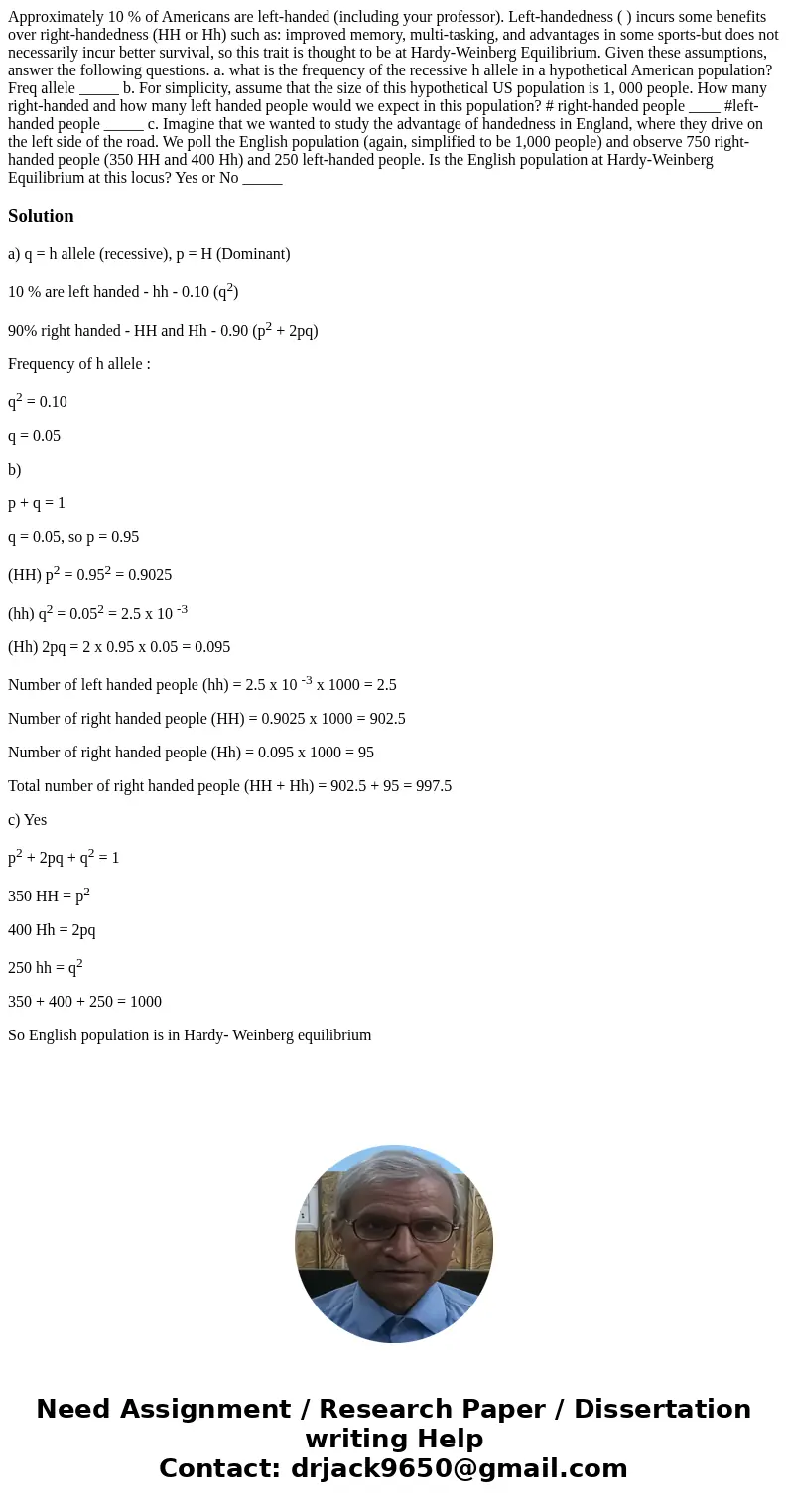Approximately 10 of Americans are lefthanded including your
Approximately 10 % of Americans are left-handed (including your professor). Left-handedness ( ) incurs some benefits over right-handedness (HH or Hh) such as: improved memory, multi-tasking, and advantages in some sports-but does not necessarily incur better survival, so this trait is thought to be at Hardy-Weinberg Equilibrium. Given these assumptions, answer the following questions. a. what is the frequency of the recessive h allele in a hypothetical American population? Freq allele _____ b. For simplicity, assume that the size of this hypothetical US population is 1, 000 people. How many right-handed and how many left handed people would we expect in this population? # right-handed people ____ #left-handed people _____ c. Imagine that we wanted to study the advantage of handedness in England, where they drive on the left side of the road. We poll the English population (again, simplified to be 1,000 people) and observe 750 right-handed people (350 HH and 400 Hh) and 250 left-handed people. Is the English population at Hardy-Weinberg Equilibrium at this locus? Yes or No _____
Solution
a) q = h allele (recessive), p = H (Dominant)
10 % are left handed - hh - 0.10 (q2)
90% right handed - HH and Hh - 0.90 (p2 + 2pq)
Frequency of h allele :
q2 = 0.10
q = 0.05
b)
p + q = 1
q = 0.05, so p = 0.95
(HH) p2 = 0.952 = 0.9025
(hh) q2 = 0.052 = 2.5 x 10 -3
(Hh) 2pq = 2 x 0.95 x 0.05 = 0.095
Number of left handed people (hh) = 2.5 x 10 -3 x 1000 = 2.5
Number of right handed people (HH) = 0.9025 x 1000 = 902.5
Number of right handed people (Hh) = 0.095 x 1000 = 95
Total number of right handed people (HH + Hh) = 902.5 + 95 = 997.5
c) Yes
p2 + 2pq + q2 = 1
350 HH = p2
400 Hh = 2pq
250 hh = q2
350 + 400 + 250 = 1000
So English population is in Hardy- Weinberg equilibrium

 Homework Sourse
Homework Sourse